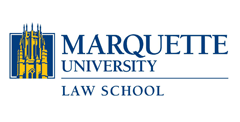Abstract
In KSR International Co. v. Teleflex, Inc., the Supreme Court rejected the Federal Circuit's rigid application of the teaching, suggestion, or motivation test (TSM test), and replaced it with an expansive and flexible approach, in determining the question of obviousness. Nevertheless, an expansive and flexible approach to obviousness may not be consistent with the international norms of practice if it is applied literally. The U.S. Patent and Trademark Office's literal application of the decision has essentially created another set of inflexible rules, which is contrary to the Supreme Court's intent. The Federal Circuit's recent decision in In re Kubin cautiously revived obvious to try in its obviousness jurisprudence. However, In re Kubin may not represent a clear precedent for determining obviousness in the biotechnological context. Certain key technological factual issues were unclear when the court was making its judgment. Commentators have suggested that a fairly high obviousness threshold coupled with a fairly low disclosure requirement will produce a few very powerful patents in uncertain industries. Nevertheless, lowering the disclosure requirement in the biotechnological context would provide inventors incentives to retain more know-how and thus frustrate the purposes of the existing statutory exemptions, namely the medical practice exemption under 35 U.S.C. § 287(c) and the so called FDA exemption under 35 U.S.C. § 271(e)(1). Therefore, this Article suggests that the high disclosure requirement for biotechnological patent applications should not be sacrificed as a tradeoff for a heightened obviousness standard.
Repository Citation
Yi-Chen Su,
What About Know-How: Heightened Obviousness and Lowered Disclosure is Not a Panacea to the American Patent System for Biotechnology Medication and Pharmaceutical Inventions in the Post-KSR Era,
14 Marq. Intellectual Property L. Rev. 321
(2010).
Available at: https://scholarship.law.marquette.edu/iplr/vol14/iss2/9
